Family : Carangidae

Text © Giuseppe Mazza

English translation by Mario Beltramini
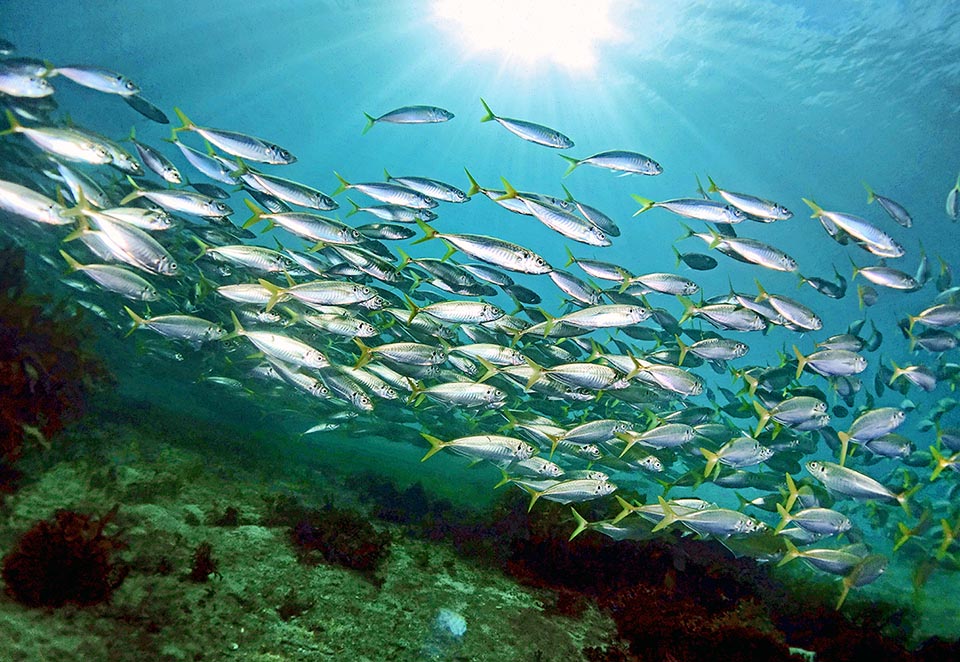
The Atlantic horse mackerell (Trachurus trachurus) is a fast, gregarious species moving in schools in Mediterranean and in eastern Atlantic from Iceland to South Africa © John Turnbull
The Atlantic horse mackerel olso known as Scad (Trachurus trachurus Linnaeus, 1758) belongs to the class of Actinopterygii, the ray-finned fishes, to the order of Perciformes and to the family of Carangidae.
The name of the genus Trachurus comes from the Greek “trachys”, rough, and “ura”, tail.
That of the species reiterates the concept, because the lateral line is armoured by spiny small shields which increase the size when approaching the tail, and among all, the Trachurus is the most spiny.
And seen that the tips are bent towards the tail, the one seizing it by that part gets a decidedly a rough experience.
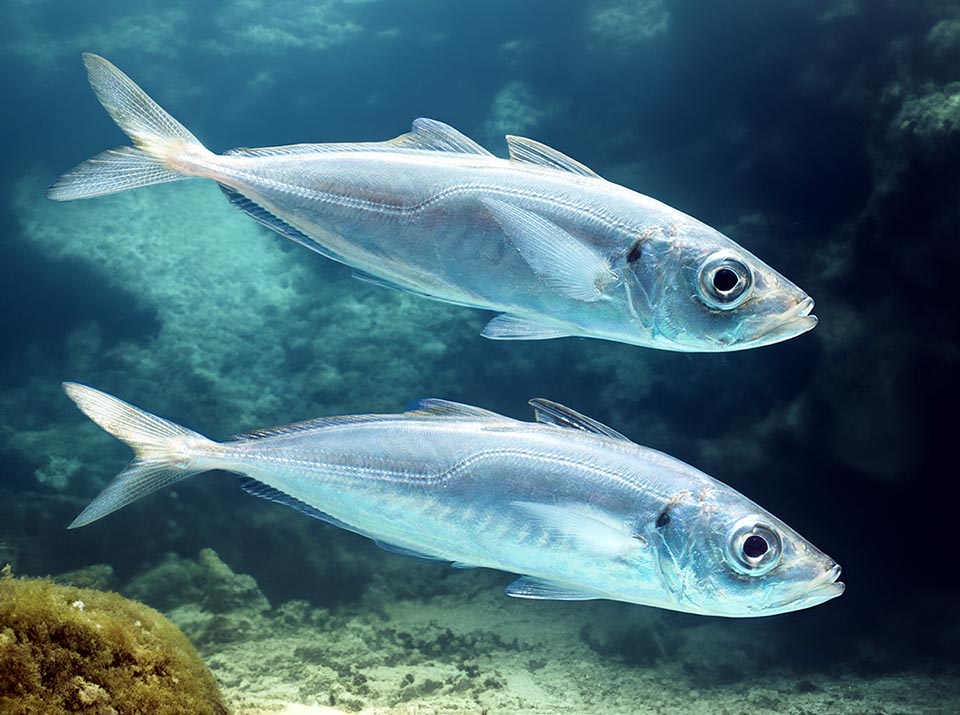
Up to 70 cm long, it never stays still. It often swims at 100-200 m of depth, but if it’s cold it goes down to 500-1000 m and in summer surfaces approaching the coasts © Giuseppe Mazza
Zoogeography
The Trachurus trachurus is present in the whole Mediterranean, including the Black Sea, where, however, its number is poor, like on the eastern coasts from Libya to Greece. Once off Gibraltar Strait, we find it, northwards, with a good density of population, up to the UK and, in minor number, in the northern countries, up to Iceland.
South from Gibraltar, it goes coasting Africa, after having colonized the Azores, Canary and Cape Verde islands, and then goes northward for a while into the Indian Ocean.
Ecology-Habitat
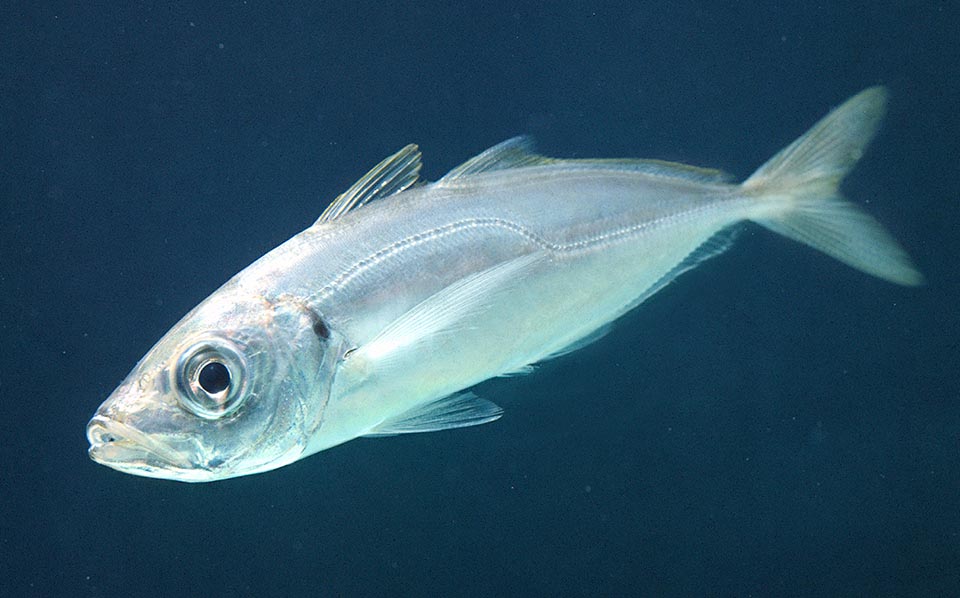
It has two lateral lines, major sense organs for swimming synchronized with comrades. One on the back and the other curvy on sides, armored with thorny defensive scutes © Giuseppe Mazza
It is a not at all attached fish to its territory and is never motionless. It sails offshore in often crowded schools which move rapidly, depending on the seasons and the events, towards where food is available. Usually, it swims at 100-200 m of depth, but, especially in winter, when it is cold in surface, it goes down, without any problem, to 500-1000 m. Only in summer it comes up to the surface getting close to the coasts, with a preference for the sandy ones.
Morpho-physiology
It can reach the 70 cm of length, but usually the specimens fished with the trawl nets reach the 30 cm at most and those seized at great depths with the longlines the 50 cm. Besides the lateral line with 69-79 piercing small shields, of which we have treated in the etymology, there is a second lateral line upward, close to the two dorsal fins. It extends from the first one to two thirds of the second, and, sometimes, almost up to the tail.
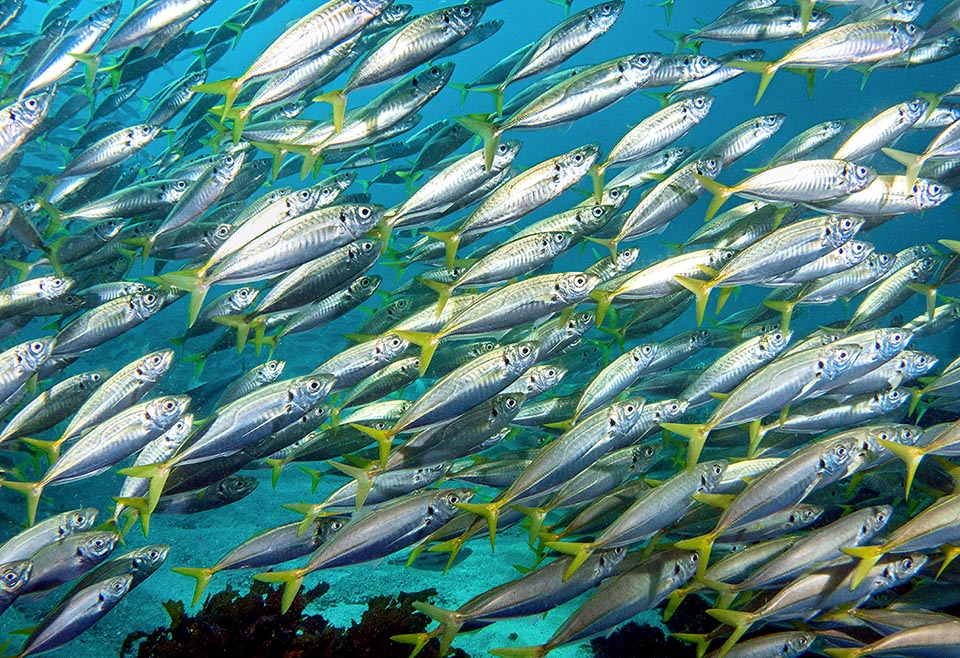
It eats plankton but also slaughters the formations of young sardines, anchovies and cephalopods it seizes with the projecting mouth rich in small teeth, even on the tongue © John Turnbull
The first dorsal is preceded by a spine sunken into the back looking forward, as in all the Trachurus and in other Carangidae like, for instance, the Pompano (Trachinotus ovatus ). It has 8 spiny rays, whilst the second dorsal has one spiny ray and 28-33 unarmed. Both, when the fish darts fast, ply in a special groove. Also the anal fins are two. The first has 2 spiny rays and the second one spiny ray and 25-33 unarmed. The caudal fin is forked, the pectoral ones are long and pointed and the ventral ones are of modest size.
The mouth, ample and oblique, shows only one row of teeth on the jaw and the mandible, slightly longer, but there is other of them, tiny, on the vomer, the palatines and even on the tongue. The eye, relatively big, is protected by two adipose eyelids, placed on the sides. The colour is greenish grey on the back, with silvery sides, at times with violaceous hues which disappear immediately after the demise. The operculum has a black dot.
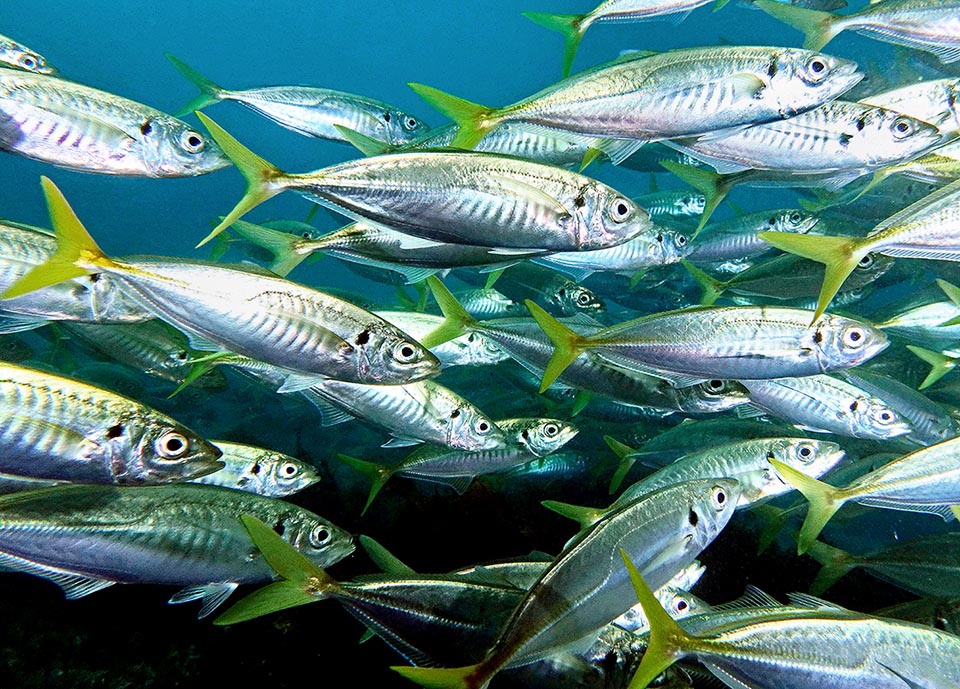
A female can lay 140.000 eggs, but being very fished to be sold fresh, frozen, smoked or canned, Trachurus trachurus is nowadays considered as vulnerable © John Turnbull
Ethology-Reproductive Biology
The Atlantic horse mackerel is a fast and gregarious species nourishing mainly of plankton: wandering crustaceans and larval or juvenile stages of fishes. When the size allows so, it attacks also small cephalopods and the schools of sardines or anchovies.
It is a permanent gonochoristic species, fertile starting from the 21-30 cm. It reproduces all over the year, depending on the regions. In Mediterranean this happens especially in summer. A female can spawn 140.000 pelagic eggs, from which generate 5 mm larvae.
The juvenile forms protect themselves from the predators by hiding often under the floating objects and in the Mediterranean sheltered by an endemic, non stinging, jellyfish, the Mediterranean jellyfish (Cotylorhiza tuberculata) that feeds, like them, on planktonic crustaceans.
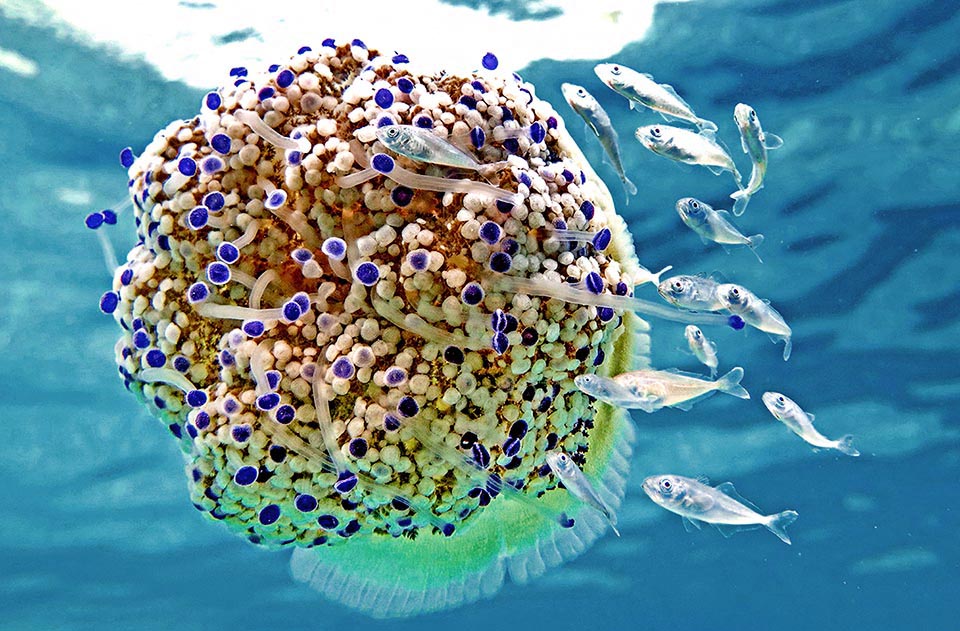
Juveniles shelter from predators by hiding under the floating objects and in the Mediterranean they often grow under the shelter of an endemic non stinging jellyfish, the Mediterranean jellyfish (Cotylorhiza tuberculata) from which they boldly steal the food from the tentacles. More, they socialize and learn to move together © Maxime Poulain
The young ones do not have qualms in ripping them from their tentacles, at times with fragments of skin, and the jellyfish becomes even a meeting place where they socialize and learn how to move in school.
The resilience of the species is good with a possible doubling of the population in 1,4-4,4 years, but the fishing vulnerability index is high and already marks 56 on a scale of 100. Trachurus trachurus consequently appears since 2013 as “Vulnerable” in the Red List of the endangered species.
Synonyms
Caranx trachurus Linnaeus, 1758; Scomber trachurus Linnaeus, 1758; Trachurus europaeus Gronow, 1854; Trachurus vulgaris Fleming, 1828.
→ For general information about FISH please click here.
→ For general information about BONY FISH please click here
→ For general information about CARTILAGINOUS FISH please click here.
→ To appreciate the BIODIVERSITY of BONY FISH please click here.
→ To appreciate the BIODIVERSITY of CARTILAGINOUS FISH please click here.
